You are viewing ARCHIVED content published online before January 20, 2025. Please note that this content is NOT UPDATED, and links may not work. Additionally, any previously issued diversity, equity, inclusion or gender-related guidance on this webpage should be considered rescinded. For current information, visit https://www.blm.gov/blog.
Rare plant species is recovering on BLM-managed land in Idaho’s Salmon River Canyon
Story by Anne Halford, BLM Idaho State Botanist. Photos by Anne Halford and Hannah Lou Cain, BLM Idaho Public Affairs Specialist.
Dazzling. Majestic. Glorious. These are just a few words that come to mind when we think of MacFarlane’s four-o'clock (Mirabilis macfarlanei), a rare native plant that makes its home in some of the steepest reaches of the Lower Salmon River Canyon in northern Idaho. This hearty perennial plant with large, striking magenta flowers can live for about 50 years, but habitat loss due to invasive weeds has taken a toll on population health. MacFarlane’s four-o'clock is currently federally listed as a threatened plant species.
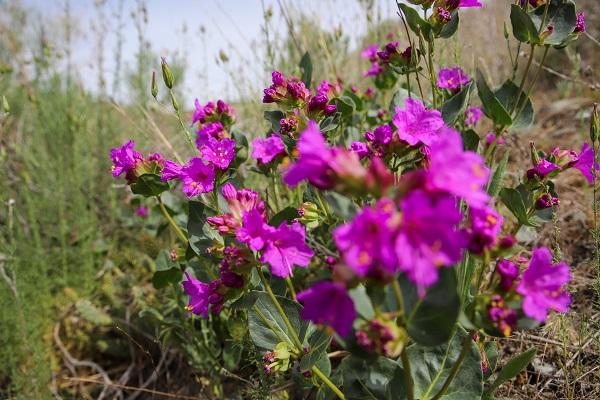
MacFarlane’s four o’clock is endemic to or regularly found in three river canyons (Imnaha, Snake and Salmon) in Idaho and Oregon. Seven of the thirteen known populations occur in Idaho on Bureau of Land Management (BLM)-managed lands in the Salmon River Canyon. MacFarlane’s four o’clock is also the only species in the Mirabilis genus that occurs in Idaho. This unique and beautiful plant got BLM botanists thinking: “How could we grow this species to help eventually recover existing populations, as well as other sites that have suitable habitat?”
Initial efforts to transplant MacFarlane’s four o’clock were started in 1988 by Craig Johnson from the BLM Cottonwood Field Office, who dug massive three to four-foot tubers from authorized collections on private land to transplant them at the Lucile Caves Area of Critical Environmental Concern. This herculean effort paid off with most of those plants still persisting today.
In 2022, a BLM Idaho State Office Cooperative Agreement with the University of Idaho Horticultural Department enabled investigation of other methods to produce lots of seedlings, as well as determine which container sizes and growing processes would help the plants survive best in nature. Together with the technical expertise of the University Plant Physiologist Dr. Bob Tripepi and Lab Lead Jenny Kerr, methods to increase reproduction of this target species were initiated. To date, they have been able to produce hundreds of MacFarlane’s four-o’clock seedlings via a method termed micropropagation, which enables mass breeding of plants using various plant parts, such as root nodules, leaves and stem cuttings.
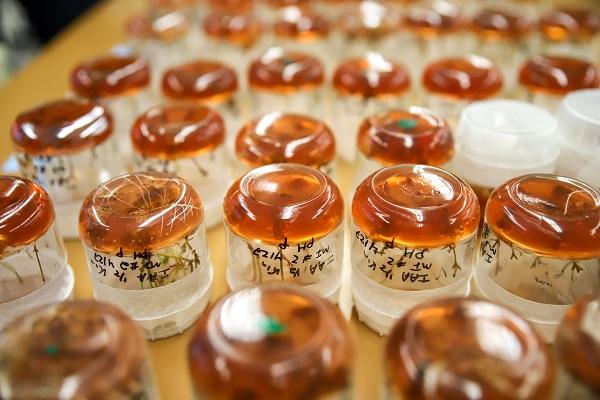
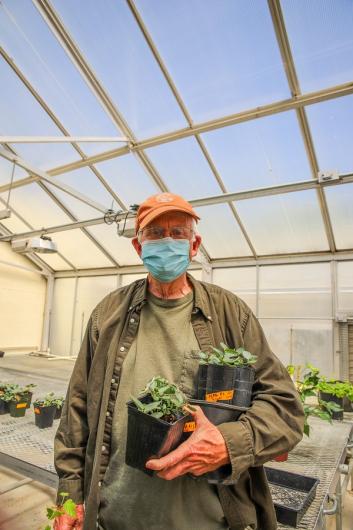
The seedlings they started from stem plant material were potted into various container sizes and grew vigorously. This past May, 879 of these seedlings were planted at the Lucile Caves Area of Critical Environmental Concern with the help of the University Horticultural Club.
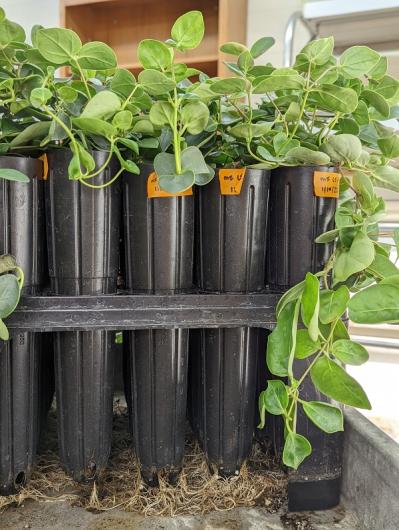
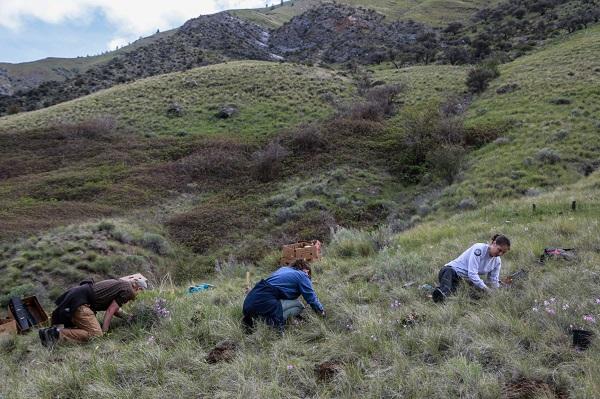
Breeding, growing and planting this species however is not enough to recover the plant due to the continued risk from invasive weeds, including a recent increase in common crupina (Crupina vulgaris). The next project to sustain populations of McFarlane’s four o’clock will include leveraging matching funding from the U.S. Fish and Wildlife Service Field Office to examine the effects of target herbicides on this species that the BLM wants to deploy in select populations to control invasive weeds. By focusing on multiple weed and restoration interventions during a five-year period, the BLM will be able to achieve a more consistent and robust treatment approach to help improve the ecological trajectory of these populations and associated plant community.
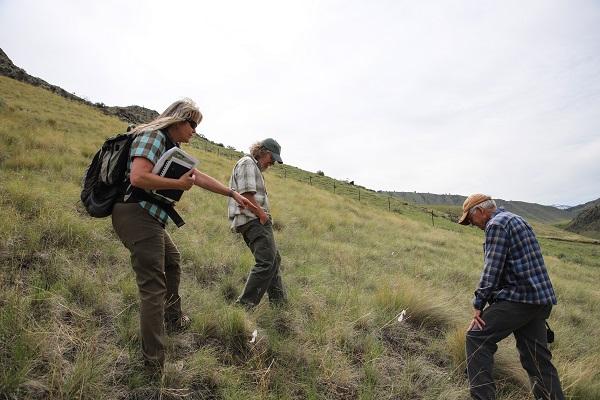
The current and planned efforts, coupled with ongoing seed conservation banking, habitat modeling and other conservation work via the BLM’s partnership with the U.S. Fish and Wildlife Service MacFarlane’s four-o’clock Technical Team, will continue to provide the field with better options to increase rare plant recovery. To view these efforts in action, check out the video produced by BLM Idaho BLM Public Affairs Specialist Hannah Lou Cain: https://youtu.be/E_kf3X2WXxM.
Related Stories
- 11-year-old Touren Pope discovers ancient turtle fossil on BLM land in Wyoming
- Progress on Public Lands: BLM 2025 Trump Administration Accomplishments | January 20 - December 31, 2025
- Popular posts: BLM's most viewed blogs of 2025
- Rural wildland firefighting partners grateful for BLM gift
- Using science to uncover mysteries of the Mesa archaeological site in Alaska
